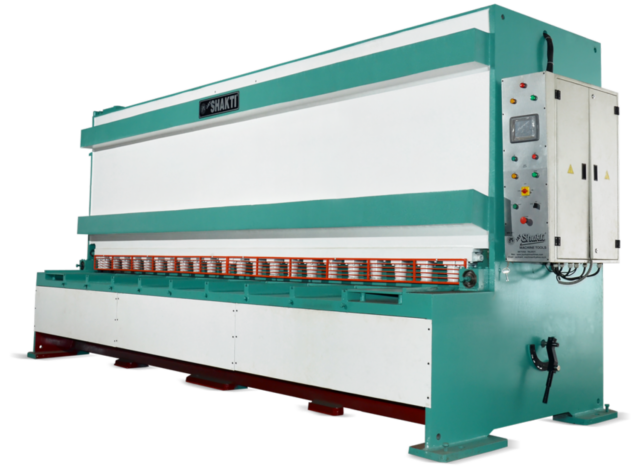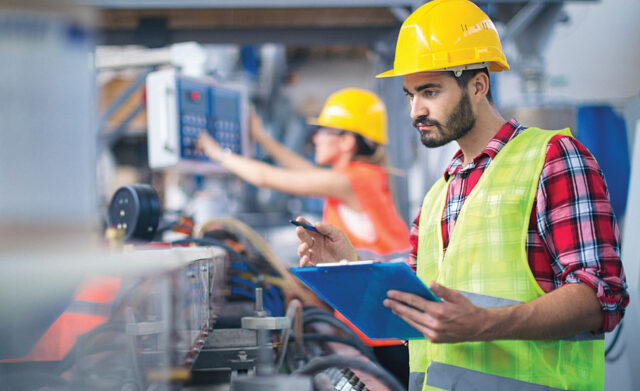
A shearing machine is an essential piece of equipment in the fabrication process. It is used to cut, bend, or roll a sheet of metal into the desired shape. As you can assume, even the slightest change can greatly improve the items your company manufactures, which is why it is important to choose the best shearing machine.
Nowadays, there are a few types of this tool, and each of them has a specific set of features. In the following article, we will provide you with some general information regarding these. We will also give you a few tips and discuss the things you should consider before making this purchase.
1. Types of shearing machine
As already mentioned, there are a few types of these, such as pedal, mechanical, electrical shearing machine, and so on. However, the two types that are most widely used today are swing bean and hydraulic guillotine shearing machine, so we will focus on them.
Swing Beam
The first thing that you will discover about this one is that the cutting angle cannot be adjusted, so this feature may be perceived as a downside. In addition, it is prone to damages since it includes a semi-cylinder without lubrication, meaning that its parts will have to be replaced frequently.
Nevertheless, the main advantage of this type is that it works very well with different types of materials, such as aluminum and steel, but also a wide variety of non-metallic materials. The fact that the upper blade does not touch the lower one during the cutting process means that not only it preserves the original state of the products, but also that the blade won’t become dull as quickly.
Hydraulic guillotine
The main advantage of this type is that, due to the adjustable cutting angles, it has a stronger shearing capacity. What’s more, this tool enables you to program each part of the process, which means that it is completely adjustable and that it will meet any requirement you have. Also, since it is a state-of-the-art tool, it provides you with products that are of the highest quality and ensures top accuracy. It doesn’t require frequent maintenance, and it is safe to use, provided that it is managed by professionals.
For further details, check out https://www.shenchong.com/category/shear-machine/.
2. How to choose the right one?
Even though we have only discussed two types, companies often face the challenge of how to pick the best one. After all, each of these has a specific set of pros and cons, so you have to do research and come up with your own list of requirements.
1. Specifications
The very first thing you have to think about is how you will use this machine. What materials will you use? Because of the density of different materials, you have to think about the plate bend it has. How hard or soft the material is? Naturally, some shears work best with the former, while others are better suited for the latter.
Furthermore, are adjustable shear angels a must for you? As already stated, some of these machines possess this feature, while others don’t.
2. Accuracy
Naturally, one of your main requirements has to be the accuracy of the cutting. Will you need a curved or straight cutting? Do you maybe require some additional technique? What degree of burr is acceptable to you?
These are some main questions you have to answer. Why? Well, the precision of the machine doesn’t only affect the quality of your products, but also the efficiency of the overall process. Surely, you want everything to run as smoothly as possible.
3. Speed

When it comes to the manufacturing process, a lot of people would argue that one has to sacrifice the quality of merchandise to speed up the entire operation. Well, this is not necessarily the case. If you go with the right machine that perfectly suits your manufacturing process, you can have the best of both worlds.
Obviously, the larger the company is, the more merchandise you have to manufacture, meaning that you need a tool that can work very fast. Still, don’t forget to consider all of its features and choose the one that can preserve the best quality of items produced.
4. Efficiency
We have already mentioned precision and speed as the main requirements on your list, but what about the time machine can operate? Surely you will agree with us that it is very beneficial to have a machine that can work for a longer period of time, simply because it will greatly boost the manufacturing, that is, you will be able to produce more goods.
Well, some of these tools are equipped with a top-notch temperature control system. Putting it simply, the cooling device will constantly monitor the temperature of the machine and control it, meaning that it can operate throughout the entire day without any trouble.
5. Durability

Each of these consists of a vast number of parts and all of them are equally important, meaning that if one of them fails, it can endanger the overall efficiency and production. We have already mentioned that some of them are more prone to damage, so you have to investigate which of these will have to be replaced frequently. Clearly, this is the additional expense you will have to pay down the road, so it is also a good idea to research the cost of each part. It is the only way to avoid unpleasant surprises in the future.
6. Price
Finally, there is the question of the cost of the machine. As you can assume, it can greatly differ between models due to their features, as well as pros and cons. The first thing you should do is investigate the average price of each model available on the market and come up with the budget accordingly.
What’s more, don’t forget to include additional expenses, such as maintenance, because there is no point in investing money in a certain piece of equipment if you cannot afford to carry out repairs when necessary.







